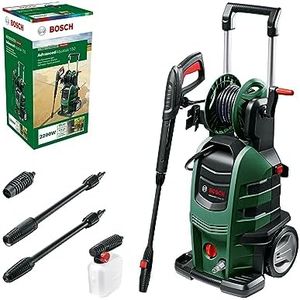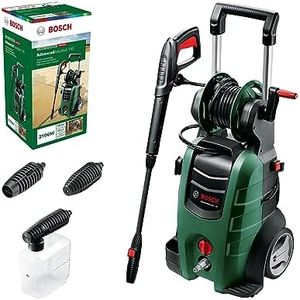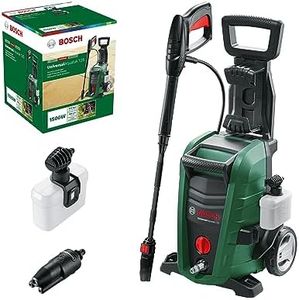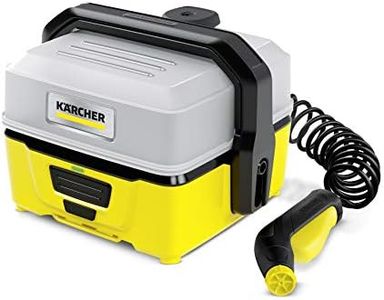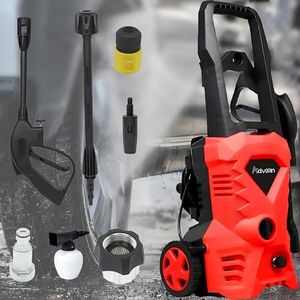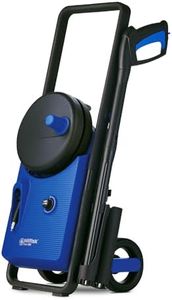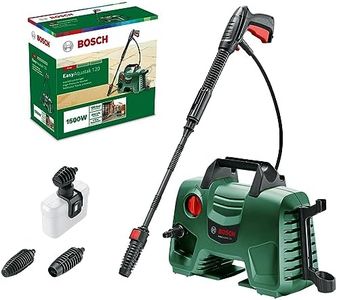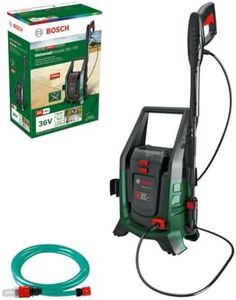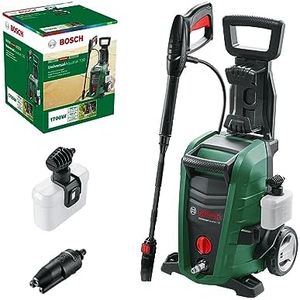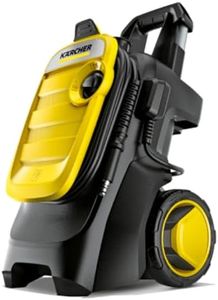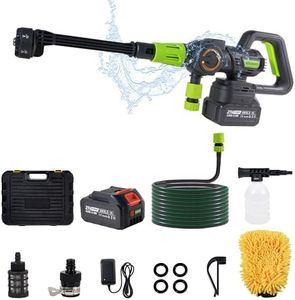We Use CookiesWe use cookies to enhance the security, performance,
functionality and for analytical and promotional activities. By continuing to browse this site you
are agreeing to our privacy policy
10 Best Small Pressure Washers
From leading brands and best sellers available on the web.Buying Guide for the Best Small Pressure Washers
Choosing the right small pressure washer involves understanding your cleaning needs and matching them with the features that best meet those needs. It's important to look at the kind of tasks you’ll use the washer for, such as cars, patios, bikes, or garden furniture. Think about how often you'll use it, how portable you need it to be, and the level of cleaning power that suits your typical jobs. By paying attention to the specs and understanding their role, you’ll make a much more satisfying choice for your cleaning tasks.Pressure (PSI/Bar)Pressure, measured in PSI (pounds per square inch) or Bar, tells you how forceful the water jet will be coming out of the pressure washer. This is one of the most important specs because it determines what type of dirt and surfaces the washer can handle. Lower pressure (around 1000-1300 PSI or 70-90 Bar) works for delicate tasks like washing cars, windows, or garden furniture. Medium pressure (around 1300-1800 PSI or 90-125 Bar) is good for patios, driveways, and bikes, tackling more stubborn grime. High pressure (above 1800 PSI or 125 Bar) in a small washer is rare, but would be for tougher surfaces. Always match the pressure to your most common cleaning tasks—higher isn’t always better, especially if you want to avoid damaging surfaces.
Water Flow Rate (Litre/min or GPM)The water flow rate, measured in Litres per minute (L/min) or gallons per minute (GPM), indicates how much water the washer puts out. This matters because higher flow rates can clean larger areas faster and rinse away dirt more effectively. Small pressure washers often range from 5 to 7 L/min (or about 1.2 to 1.8 GPM). Lower flow will be fine for light jobs, but if you're cleaning large patios or want to finish quickly, a higher flow rate is better. Consider your patience and the area you regularly clean when deciding on the flow rate you need.
Portability & WeightPortability is mainly about how easy it is to move the pressure washer around, which comes down to its weight, handle design, and maybe the presence of wheels. Lighter models (around 4 to 6 kg) are perfect for users who need to carry the washer upstairs or store it away easily, making them great for small gardens or flats. A slightly heavier unit (up to 10 kg) may have more power but could be less convenient for regular movement. Think about your strength, storage, and whether you’ll need to transport the washer frequently to choose the right balance here.
Power Source & Cord LengthMost small pressure washers are powered by electricity, so it's important to look at the cord length for convenience. A short cord (under 5 meters) might require you to use extension leads, while longer cords (5 meters or more) give you more freedom to move around a vehicle or garden. If you don’t have easily accessible power sockets, pay special attention to cord length. Also, see if the washer can be used with extension cords safely, as this can extend your working area.
Accessories & Nozzle OptionsThe range of nozzles and accessories greatly affects how versatile your pressure washer is. Some washers come with multiple spray tips (like a gentle fan or a more focused jet) or special attachments like detergent bottles, patio cleaners, or brush heads. Adjustable nozzles can make switching jobs much quicker. If you plan to clean a variety of items, having several nozzle options can make the job easier and more effective. Think about the variety of surfaces and dirt you’ll encounter, and look for a model with the accessories that support your needs.
Hose LengthThe hose length controls how far from the machine you can work. Short hoses (3-4 meters) might be restrictive, especially if you need to walk around a car or reach the far corner of a patio. Longer hoses (5-8 meters) provide more freedom, reducing the need to move the washer itself. Think about the spaces you’ll usually clean and whether a longer hose will make your cleaning routine easier.
